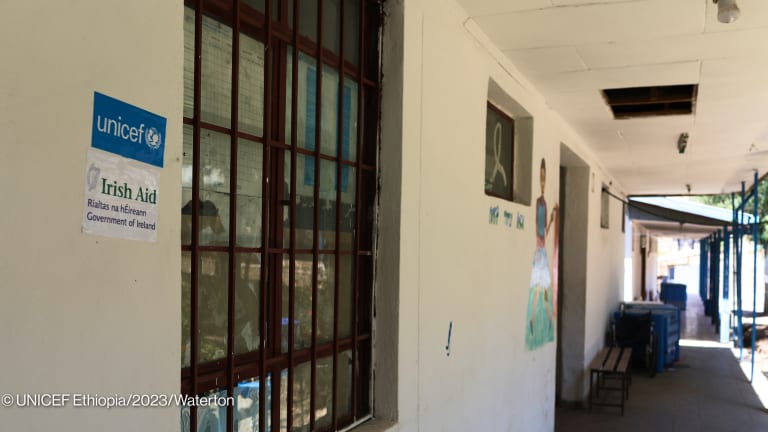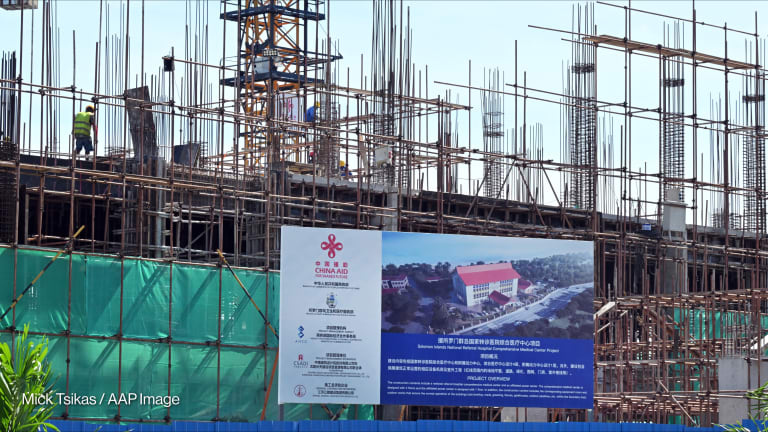European aid: A primer
The Directorate-General for International Partnerships accounted for a significant portion of the European Commission's total aid spending in 2021. But how does it spend its money and where is it going? Here’s our analysis.
In 2021, the European Union and its member states provided €70.2 billion ($74.8 billion) in official development assistance — accounting for 43% of the total ODA that year. Of this, nearly €14.5 billion came from the European Commission — the EU’s main executive body. The EC oversees ODA mainly through directorates-general. Each directorate-general is roughly equivalent in function to a government department. The most important for global development is the Directorate-General for International Partnerships, or DG INTPA — the lead agency for development policy, previously known as DEVCO and EuropeAid. Other relevant channels are the Directorate-General for European Neighbourhood and Enlargement, or DG NEAR, and the Directorate-General for European Civil Protection and Humanitarian Aid Operations, or DG ECHO. A significant portion of ODA is also drawn from the European Development Fund. This fund previously received contributions from EU countries to spend on international development, but wasn’t formally part of the EU budget. Residual funding from previous EDFs is still being disbursed, but it is currently in the process of being merged into the main pot of money controlled by DG INTPA. DG INTPA spent nearly €6.5 billion in ODA in 2021 — almost half the total amount of EU ODA. But how does it allocate its budget? Where is the money going? Here’s what we found. What is DG INTPA’s role in European aid? In 2020, the EU announced its latest Multiannual Financial Framework, or MFF, worth €1.2 trillion. This covers the majority of EU spending from 2021 to 2027. The MFF is not limited to development expenditure, but it did include €79.5 billion for the Global Europe: Neighbourhood, Development, and International Cooperation Instrument, or NDICI-Global Europe. NDICI-Global Europe is managed by DG INTPA, and is the department’s main instrument for development spending. DG INTPA sets the EU’s development cooperation objectives and priorities through so-called multiannual indicative programs. Each MIP sets out the EU’s long-term priorities for a particular country or region, as well as the rough budget available to support those priorities. Under the MFF, the budget for country-specific MIPs for 2021 to 2024 and regional MIPs for 2021 to 2027 is set at more than €26 billion. Aside from this, DG INTPA also manages ongoing operations funded through the EDF. It also looks after another pot of money — the EU Trust Funds, which are set up from time to time to respond to specific issues. Where is the money going? As mentioned above, the EU’s 2022 report on external action puts DG INTPA’s ODA disbursement at nearly €6.5 billion — €3.1 billion from the EU budget and €3.3 billion from the EDF, including co-financing. Of this total amount, almost €6.4 billion was channeled bilaterally, while the remaining went to core contributions to NGOs, private institutions, and multilateral agencies. The largest portion of this ODA, worth €3.4 billion, went to Africa — although this was heavily driven by EDF allocations to the region. Of this amount, just €428 million came from DG INTPA’s EU budget. Looking only at spending from the EU budget, the largest share went to Asia, worth €1.1 billion. DG INTPA’s total ODA disbursement per region — combining funding from both the EU budget and EDF — were: • Africa - €3.4 billion. • Asia - €1.1 billion. • Latin America and the Caribbean - €512 million. • Oceania - €111 million. • Europe - €25 million. A further €1.2 billion was spent on projects benefiting several countries from different regions. The Organisation for Economic Co-operation and Development labels this as “development countries, unspecified.” By sector, nearly half of DG INTPA’s ODA, worth €3.2 billion, went to social infrastructure and services. This included €1.2 billion for government and civil society, €956 million for health, and €389 million for education. The rest went to other priorities, including the production sector — which includes agriculture, mining, construction, trade, tourism, and other industries — multisectoral projects, economic infrastructure and services, in-donor refugee costs, and humanitarian aid. How does DG INTPA fund its partners? DG INTPA programming involves a series of dialogues with partner countries, EU member states, multilateral organizations, nongovernmental and civil society organizations, and other key stakeholders to set priorities and objectives. DG INTPA funds partners via three main mechanisms: One is a framework contract, which allows pre-approved consortia to bid for work at short notice. In 2018, DG INTPA announced a €650 million framework contract, called Services for Implementation of External Aid, or SIEA. Based on our previous analysis, €362.6 million was disbursed through SIEA between 2018 and January 18, 2022. Recently, DG INTPA announced a new framework contract, with an estimated total value of €680 million. Another method of partnership is through grant opportunities, which include action grants and operation grants. Action grants help achieve a specific policy objective, while operation grants cover operating costs. DG INTPA announces grant opportunities through its calls for proposals and tenders publication website. Lastly, DG INTPA procures services, supplies, or works through tender announcements. Although calls for tenders are generally done through a competitive bidding process, other procedures are also used under specific conditions. This includes restricted calls for pre-selected candidates, direct contracting through negotiation, and single tender procedures for those with less than €20,000 budget. For both grants and tenders, the process may be directly or indirectly managed by DG INTPA. Under direct management, DG INTPA is responsible for the entire procedure — from the publishing of the call, selection of awardee, signing of contract or grant, to monitoring. Under indirect monitoring, the process is entrusted to a third party which meets the EU’s pillar assessment requirements for sound financial management, such as certain United Nations or EU member state development agencies. Vince Chadwick contributed reporting to this piece. Try out Devex Pro Funding today with a free five-day trial, and explore funding opportunities from over 850 sources in addition to our analysis and news content.
In 2021, the European Union and its member states provided €70.2 billion ($74.8 billion) in official development assistance — accounting for 43% of the total ODA that year.
Of this, nearly €14.5 billion came from the European Commission — the EU’s main executive body.
The EC oversees ODA mainly through directorates-general. Each directorate-general is roughly equivalent in function to a government department.
This story is forDevex Promembers
Unlock this story now with a 15-day free trial of Devex Pro.
With a Devex Pro subscription you'll get access to deeper analysis and exclusive insights from our reporters and analysts.
Start my free trialRequest a group subscription Printing articles to share with others is a breach of our terms and conditions and copyright policy. Please use the sharing options on the left side of the article. Devex Pro members may share up to 10 articles per month using the Pro share tool ( ).
Miguel Tamonan is a Senior Development Analyst at Devex, where he analyzes data from public and private donors to produce content and special reports for Pro and Pro Funding readers. He has a bachelor’s degree in Political Science with a Major in International Relations from the Polytechnic University of the Philippines.








